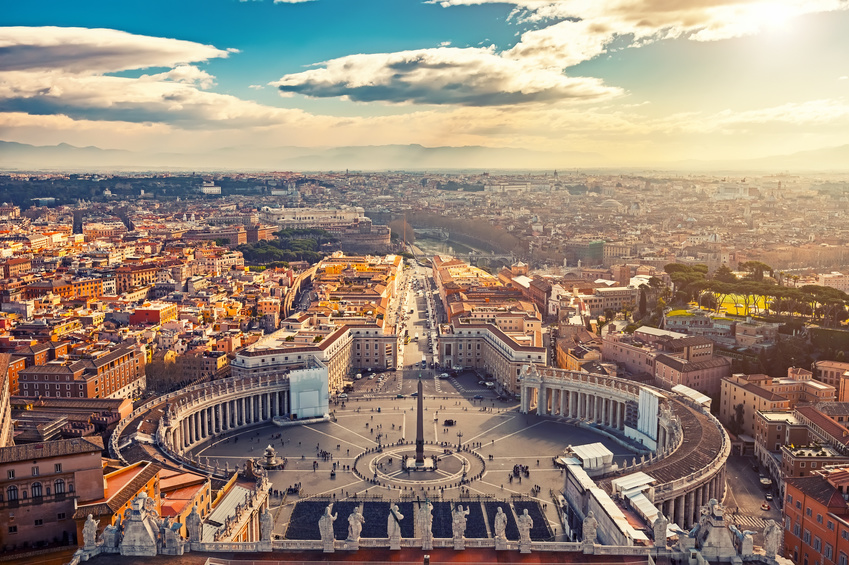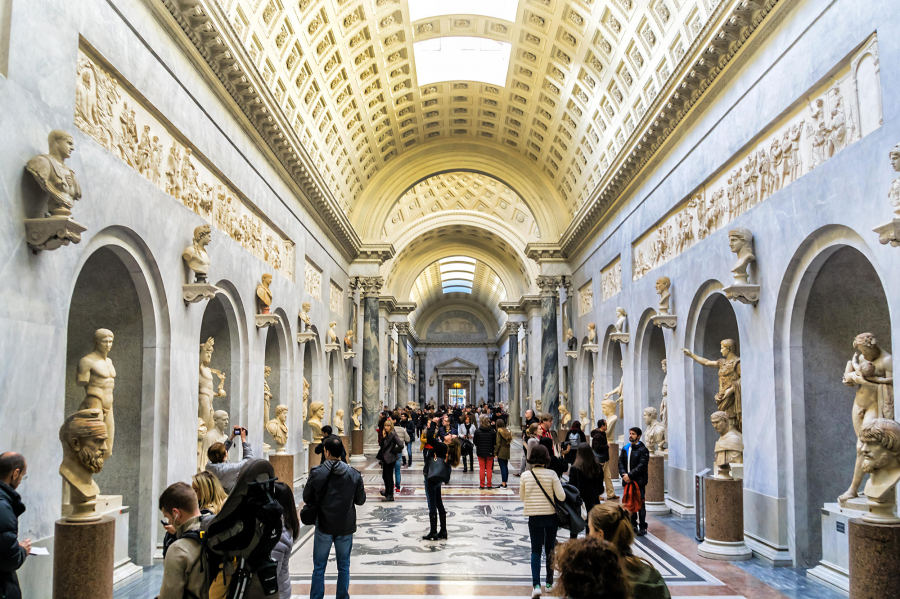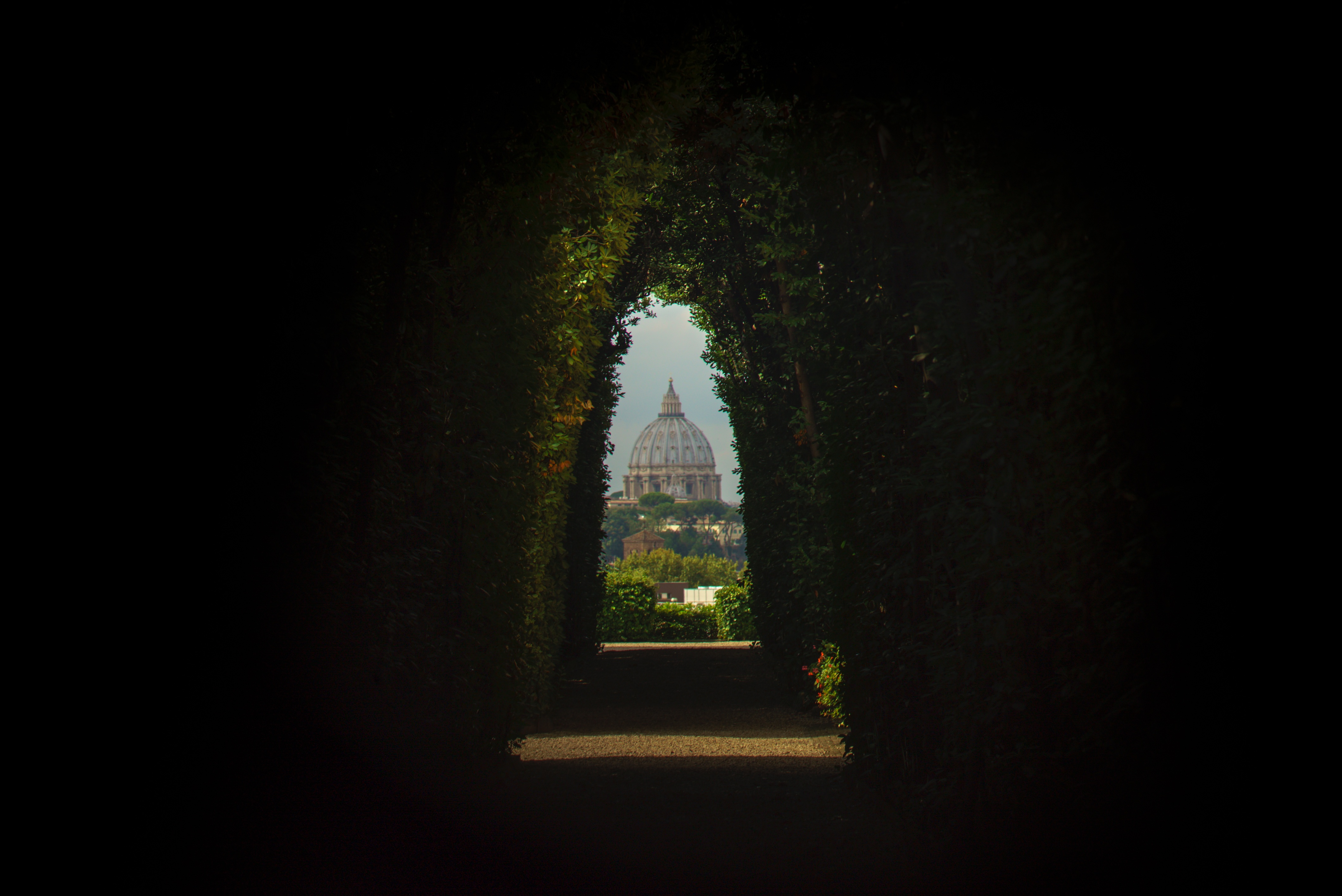Despite its small size, the Vatican is considered one of the most powerful countries in the world today. Located on a hill just outside the northwest gate of ancient Rome, it is the official residence of the Pope and other Catholic Church dignitaries. With an area of only 0.44 km2(only 1/8 the size of Central Park in New York, USA) and a population of about 1,000 people, Vatican is the smallest country in the world that contains many interesting things that not everyone knows.
1. A separate country located in the heart of Italy

The Vatican was established in 1929 by the Lateran Treaty as a successor to the larger Papal States, which existed from 756 to 1870 AD and was a theocratic monarchy. The Pope is the Head of State and Head of Government of the Vatican, and is the only absolute monarch in Europe who is not hereditary, holding supreme legislative, executive, and judicial power.
The Vatican's currency is the Euro, and the country has its own stamps, passports, license plates, flag, and anthem. One thing it doesn't have is a tax system. The Vatican's income comes from museum admissions, stamps, and souvenir sales, as well as donations from various organizations.
2. St. Peter's Church was formerly an ancient cemetery.

In ancient Rome, the cemetery of this empire was located on Vatican Hill. In 64 AD, after a fire razed the great city, Emperor Nero tried to blame all the Christians who caused the fire. This king executed these people in many different ways. Among them, Saint Peter was the leader of the group of apostles of Jesus and also the first bishop of the Roman Empire. His body was buried right on Vatican Hill.
By the 4th century, when Christianity was legally recognized in Rome, Emperor Constantine began building a church over the ancient tomb and resting place of St. Peter. Construction began in the 1500s.
3. The Pope has never left the Vatican in 60 years

When the Vatican was a state within Italy called the Papal States, the popes always refused to be annexed under the control of the Italian state. Pope Pius IX (reign: 1846 - 1878) once declared himself a "prisoner in the Vatican". For the past 60 years, the popes have not left the Vatican to be under the control of the Italian government. When the Italian army was present in St. Peter's Square, the popes did not appear on the balcony and refused to bless them.
4. View from the roof of St. Peter's Basilica

The best place to see the entire Vatican is to climb to the top of St. Peter's Basilica. From here you can see 61 major buildings of the Vatican.
These structures were built one after another over the past thousand years, from the crypt of St. Peter to churches, chapels, papal palaces, museums, squares to the governor's house, helipad, train station, road system inside the Vatican...
5. Swiss soldiers are hired as national army forces

When visiting the Vatican, visitors can easily meet The Swiss Guard. Dressed in colorful Renaissance-style uniforms, they began protecting the Pope in 1506. That was when Pope Julius II came to power, he followed in the footsteps of many prominent people in Europe, hiring a Swiss army to ensure his safety.
This army regularly patrols and carefully guards the entire Vatican City. They are well-trained, strong, disciplined and are excellent marksmen. Of course, the members of the team are all Swiss.
6. The country with the largest number of tourists in the world

As of 2015, the Vatican's population is estimated to be around 1,000. With 5 million tourists per year, the Vatican is the most visited country in the world per capita.
The Vatican's population includes Cardinals, members of the Swiss Guard, members of the hierarchy, and a nun within the Vatican. There are also members of the hierarchy serving in diplomatic posts abroad.




















.jpg.jpg)




.jpg.jpg)







